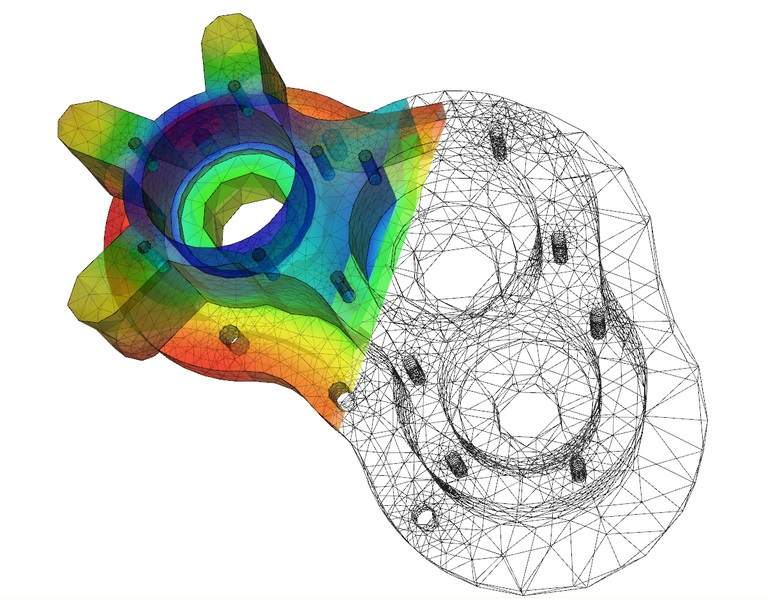ME201 - Solid Mechanics

Instructor
Prof. Krishna Jonnalagadda
Section
S2 (Depending on the availability of slot 5)
Semester
Autumn
Course Difficulty
Moderate (builds on JEE-level mechanics and some concepts from CE 102)
Time Commitment Required
The time commitment required for the course was quite high. There were 6 quizzes and they were conducted outside class hours(Usually Thursday 9-10 pm). Tutorials and Homeworks were regularly uploaded on moodle. So you had to spend at least an hour for each homework and tutorial in addition to revising the notes/theory. Initially, it is easy to understand the theory, although the concepts in the latter half require more effort. It is required to understand the concepts well through extensive problem solving so as to understand the different types of questions. Two-three hours per week apart from the usual class hours would be enough to perform well in the course although it may vary from person to person.
Grading
Luckily grading was good in our case as the marks scored on the higher side had a small range. Professor followed a relative grading scheme. Your score was scaled relative to the toppers grade and cut-offs were decided using this scaled score. This scheme was announced at the beginning of the course
Attendance Policy
None. But attendance was used to decide the grades in case your scores were very close to the cut-offs.
Pre-requisites
None. CE 102 will be helpful. Professor gives a recap of necessary topics from CE 102 for people who haven’t done the course
Evaluation Scheme and Weightages
- Homework: 10%. They were graded by picking 1 or 2 random questions.
- Tutorial: 10%. Approximately 10-11 tutorials were conducted in the class. They were all graded and everything except the worst score was considered for the final score.
- Quizzes: 40% (6 quizzes. 5 best quiz scores considered for grading. There were no make-up quizzes)
- Mid-semester exam: No Midsem
- End-semester exam: 40%
Topics Covered in the Course
Introduction to deformation of solids, Idealization of constraints and loads for analysis, Equilibrium analysis of trusses, Axial deformation and loads in bars/beams, Statically determinate/indeterminate problems, Forces and moments transmitted under transverse loads (bending of beams), Concept of Stress and equilibrium equations, Concept of strain and compatibility equations, Stress and strain transformations, Constitutive equations (stress-strain relations), plane stress, plane strain and 2D problems (including axisymmetry), Torsion of circular bars, Bending and shear stresses in beams of different cross-sections, Energy Methods, Strain and stored energy concepts, Castigliano’s first and second theorems
Quality of Lectures
Instructor heavily relied on the blackboard to teach. In fact, no slides were used in the entire course. So it was highly important to make notes in the class. Some lengthy derivations were uploaded using hand-written notes. The instructor explains concepts well and clears all the doubts. Generally in the middle of the lecture, he used to deviate and talk about interesting facts about science and engineering in India, current affairs etc. So you won’t be bored by lengthy monologues. He teaches at a good pace. Tutorials were given great importance and they were very helpful for the understanding.
Assignments and projects in the Course
Homeworks were easy and doable. They were closely related to what was discussed in the class and related to the problems in the reference book. Help sessions were conducted by TAs to help with the homework. No project was allotted in this course.
Exams
Quizzes were straight forward if tutorials and homework were solved sincerely. Even though all quizzes had equal weightage, difficulty increased through the course of the semester. So it’s better to prepare and do well in all the quizzes, even if best 5 out of 6 is considered. Since there was not conducted, endsem paper was the major factor which decided the grade. Endsem was harder compared to the quizzes and some questions required you to think beyond what was discussed in the classroom.
Reference Material
An Introduction to the Mechanics of Solids by Stephen H. Crandall was the primary textbook. It’s highly recommended that you solve the examples and exercises given in the text.
Importance of Course
It is a prerequisite for the core course ME 202(Strength of Materials), which runs in the even semester. ME 202 builds on the concepts of ME 201 and it’s very difficult to perform well in it without a strong grasp of the concepts from ME 201. ME 201 builds the foundation for many advanced topics in Solid Mechanics and hence it is very essential for research in fields like finite element method(FEM).